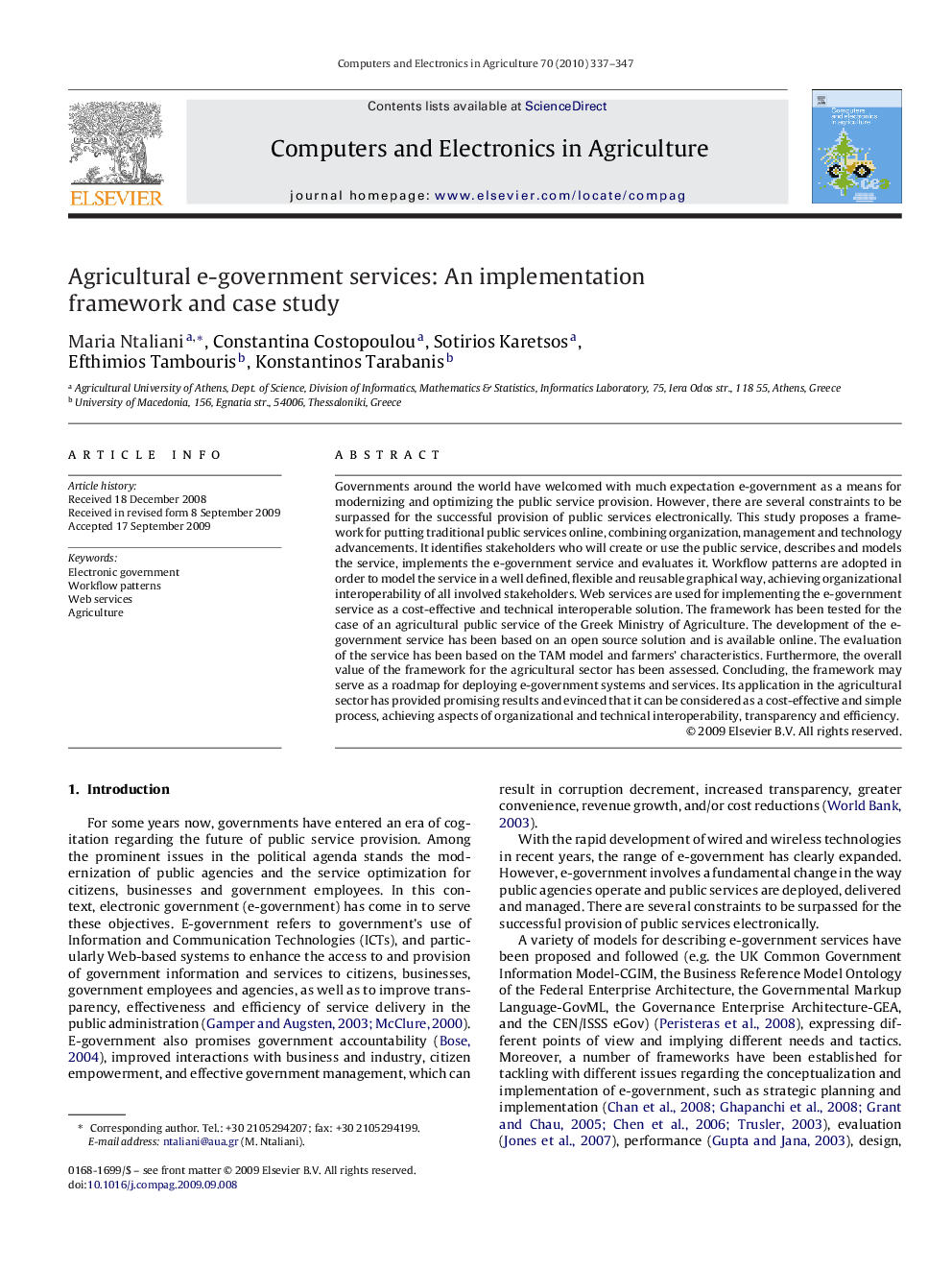| Article ID | Journal | Published Year | Pages | File Type |
|---|---|---|---|---|
| 84851 | Computers and Electronics in Agriculture | 2010 | 11 Pages |
Governments around the world have welcomed with much expectation e-government as a means for modernizing and optimizing the public service provision. However, there are several constraints to be surpassed for the successful provision of public services electronically. This study proposes a framework for putting traditional public services online, combining organization, management and technology advancements. It identifies stakeholders who will create or use the public service, describes and models the service, implements the e-government service and evaluates it. Workflow patterns are adopted in order to model the service in a well defined, flexible and reusable graphical way, achieving organizational interoperability of all involved stakeholders. Web services are used for implementing the e-government service as a cost-effective and technical interoperable solution. The framework has been tested for the case of an agricultural public service of the Greek Ministry of Agriculture. The development of the e-government service has been based on an open source solution and is available online. The evaluation of the service has been based on the TAM model and farmers’ characteristics. Furthermore, the overall value of the framework for the agricultural sector has been assessed. Concluding, the framework may serve as a roadmap for deploying e-government systems and services. Its application in the agricultural sector has provided promising results and evinced that it can be considered as a cost-effective and simple process, achieving aspects of organizational and technical interoperability, transparency and efficiency.
